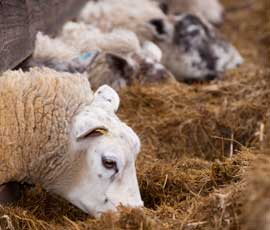Red clover caution for breeding ewes

Red clover may tick boxes for sheep producers when it comes to finishing lambs and fixing nitrogen, but it can have a negative effect on the fertility of breeding ewes.
To understand better the industry-wide approach to avoid grazing breeding ewes on red clover for the six weeks before and after tupping, industry bodies – EBLEX, HCC, QMS and AgriSearch – commissioned the Institute of Biological, Environmental and Rural Sciences (IBERS) at the University of Aberystwyth, to investigate further.
The IBERS study backed up the approach. The key findings are listed below:
• Red clover poses a much greater risk than both white clover and lucerne, with lupins having very low or negligible phyto-oestrogen contents
• Certain red clover varieties – AberRuby in the UK and Grasslands G27 in New Zealand – have been bred to have low phyto-oestrogen contents
• Studies in Australia and New Zealand suggest red clover phyto-oestrogen levels are higher in the spring and decline after flowering
• High phyto-oestrogen levels have also been found in plants suffering from nutrient deficiencies or disease infections
• In New Zealand, alternating ewes grazing on red clover around mating between “high” and “low” oestrogen pastures, was found to dramatically lower any effects on fertility
• Ewes prefer clover over grass, so grazing them on pastures containing only low levels of red clover can still create fertility problems
• Ewe lambs being used for breeding should not be grazed on red clover pastures
• Red clover silage and hay can have a higher phyto-oestrogen content than the sward, and the type of silage inoculant used can also impact on levels, with bacterial inoculants creating higher levels than formic acid based inoculants
• No negative effects have been recorded from grazing rearing or working rams on red clover
